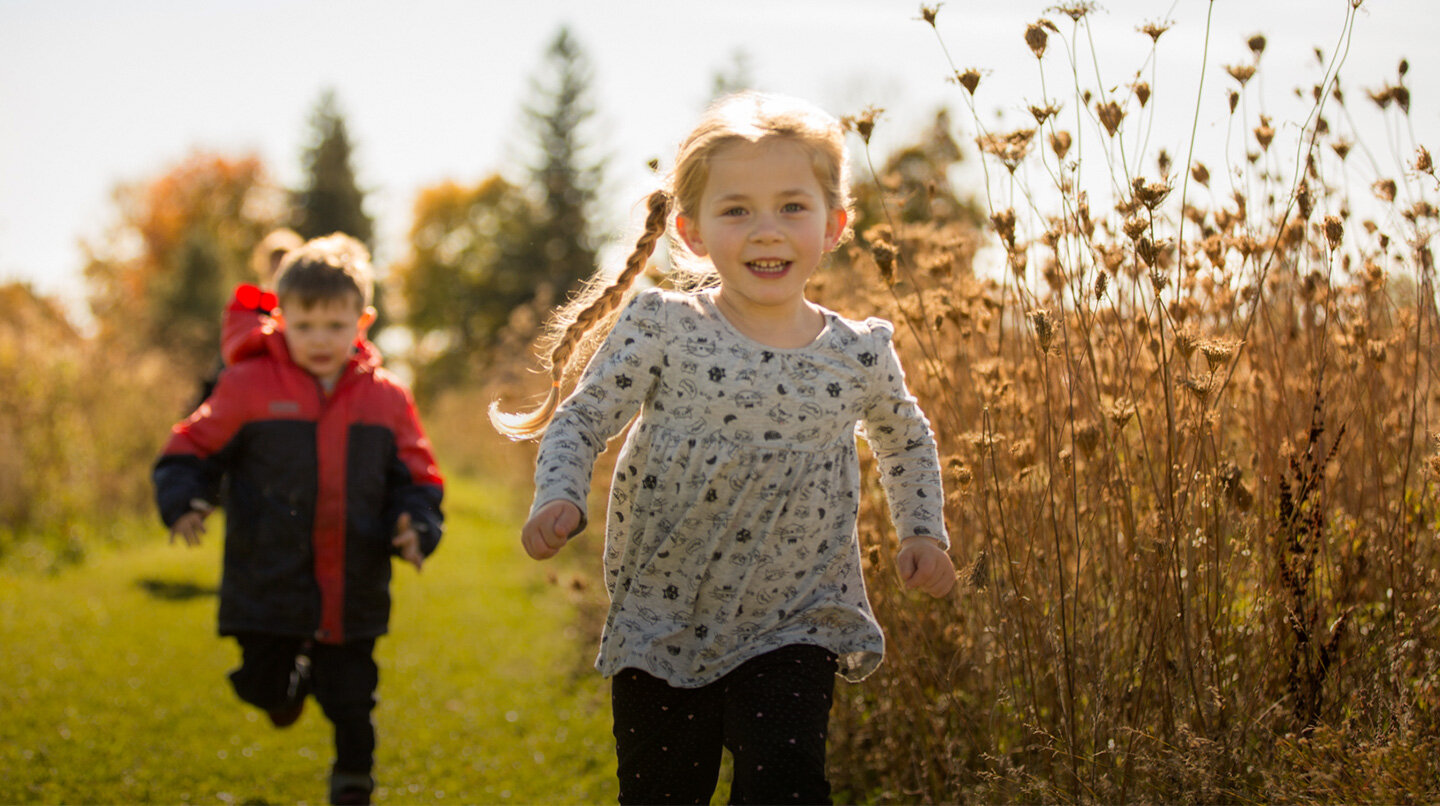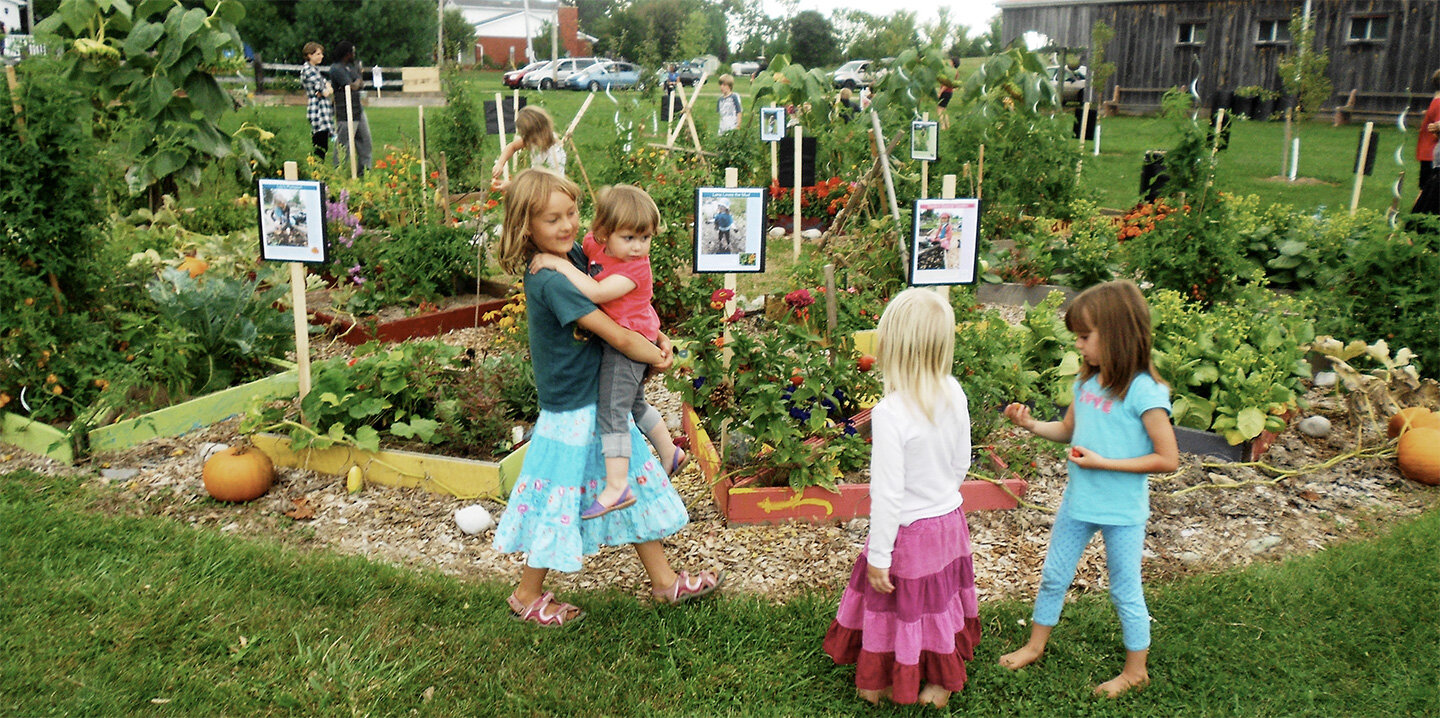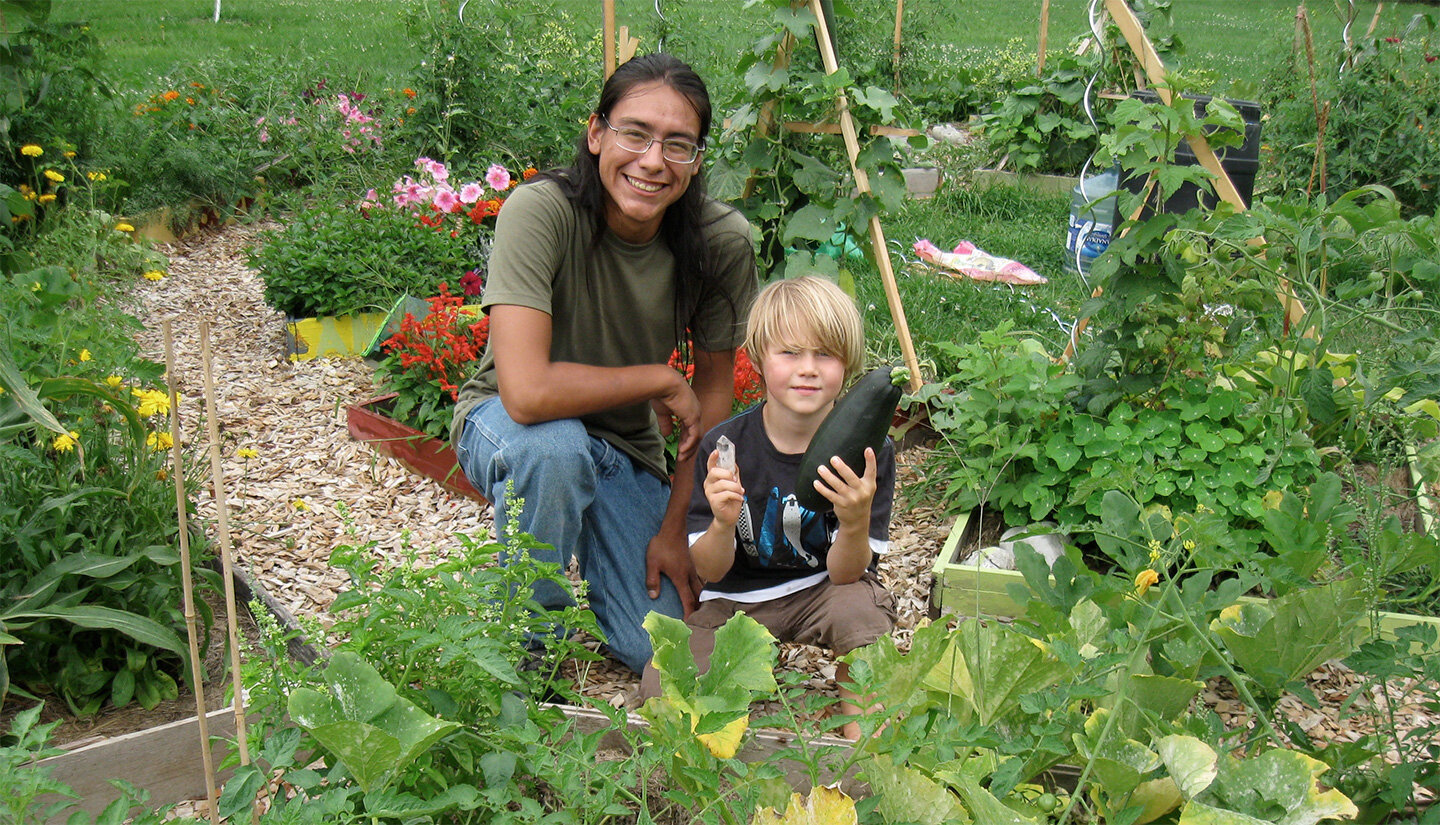
Evolution of the Land
Planting Seeds of Hope (PSOH) serves as the national headquarters for Children’s Lands Canada (CLC) and has been a leading force in implementing Children’s Lands programming throughout Canada. Through a combination of training, mentorship, and ongoing support, PSOH empowers educators, community leaders, and families to bring this transformative initiative to life in their own communities.
PSOH believes that the more time young people spend in nature, the deeper their understanding of their connection to the natural world. This connection fosters an awareness of how their actions impact the environment, often sparking what we call active empathy for life—a powerful understanding that drives children to care for and protect the planet.
In 2009, PSOH established Children’s Land Canada by dedicating the majority of their 46-acre commercial farmland to local children. This marked the creation of the first Children’s Land in Canada—a special space where children could explore and interact with nature in meaningful ways.
As children’s relationships with the land grew and their sense of belonging deepened, they began working together to transform the land into environments that benefit both nature and humanity. What was once an empty field evolved into a thriving, biodiverse landscape, home to a wide variety of ecosystems.
Today, the property is home to 12,000 native trees, a network of hiking trails, a one-acre wetland, a flourishing fruit orchard, children’s gardens, a community shared agriculture (CSA) area, a small homemade greenhouse, and meadows that support insects, birds, and butterflies.
We are proud to share the inspiring stories of local children who have worked together to support ecology, increase biodiversity, and create environments that benefit both people and the planet. Their transformative actions are a testament to the power each of us holds to make a positive impact on the world around us.
Children’s Forest
The children wanted to plant trees to create an environment where local deer could hide from coyotes and where birds and squirrels had a place to sleep. This idea resulted in a 12,000-tree forest, for which the children were acknowledged with a Carolinian Canada Conservation Award. The trees began as tiny seedlings, and many are now well over ten feet tall!
Field Restoration
The land that the children originally received had a decades-long history of commercial agriculture use. As they transformed the field into an area rich in biodiversity, the children discovered that their efforts to improve the land — planting trees, creating a wetland, establishing hiking trails, and so on — were matched and met by the life-bringing wisdom and power of Mother Earth.
The once-depleted field is now home to thousands of plants, wildflowers, insects, and animals. Each year, the children and their families look forward with excitement to discovering new flora and fauna that appear there. They have learned that as the land heals, the soil changes, enabling different plants and wildlife to emerge with each new cycle.
Trails
In 2009, a young girl envisioned a trail system that would wind its way through the large open field. She sketched an initial design, which was then roughed out with a weed trimmer. Over the years, her designs and trails continued to evolve to meet the ever-changing landscape of the backfield. Today there are several kilometers of trails used by the hundreds of children that visit the property each year.
For the moving story of how this trail system came to be, please read Lily’s Evolving Trails.
Wetland
What started out as a simple wish for a water garden transformed over time into a one-acre wetland that provides a much-needed habitat for animals, birds, wildlife, and aquatic plants. The wetland is equipped with a floating observation dock that allows children to get up close and personal with the rich wetland life. In the winter, it becomes a skating rink for them to enjoy.
To learn about the wetland’s incredible evolution, please read Spence’s Wetland.
The Bug Hotel
The PreSchool children from Niwasa Kendaaswin Teg spent the fall discovering and building a relationship with the bugs in our area. They quickly transitioned from being fearful, to being curious to becoming empathetic advocates for the bugs. When asked what they would like to create on the land that would bring joy to themselves, others and the natural world, the children unanimously decided to build homes for the bugs.
The Fairy Tree
A young girl wanted to create a magical place where children could be inspired to use their creativity and imagination. When she learned that people in Ireland refer to the hawthorn tree as a “fairy tree” (because the thorns protect the fairies) she decided that the old hawthorn tree on the border of the property would be the perfect place for what she was envisioning.
Click here for the inspirational story of Sadie’s magical fairy tree.

Children’s Garden
The front area of the property was once a simple grassy space. The children worked together to transform it into a vibrant garden using a method known as lasagna gardening (we now substitute regular soil for peat moss). This technique involves layering various organic materials to create rich, fertile soil. The children then added personalized touches, such as painted signs, colorful stones, and other creative details, turning the space into a unique and beautiful garden where their plants can thrive.

Community Shared Agriculture
Garden produce is shared with our local community and beyond, benefiting friends, family, nonprofit organizations, food banks, animal shelters, and visiting Elders who share their wisdom and teachings with us. Some of the harvested food and medicines are also offered back to Mother Earth as a gesture of gratitude to give thanks for all that she provides for us. The children also set up food stands and '“children’s markets” to exchange their bounty for donations. These contributions directly support the children’s ongoing projects and initiatives.
Climbing Stumps
Many of our children love to climb, and one of their dreams was to create a dedicated space for it on the land. Large stumps from a fallen maple tree were repurposed, and the children took part in designing and building a climbing stump area. This playful space is now enjoyed by all the children who visit each year.
Fruit Tree Orchard
One of the children’s wishes for the land was to grow fruit trees. In 2012, they planted small apple, peach, pear, plum, and cherry trees, which continue to thrive in the children’s garden area. Since then, apricot trees, paw paw trees, and a variety of berry bushes have been added. The children love harvesting the fruit and sharing it with friends and family.
Greenhouse
The children helped build and decorate a mini-greenhouse using old screen doors donated by one of the mothers in our community. Each spring, it serves as a home for the children’s seedlings, and in the winter, it becomes a cozy spot to warm up on sunny days.
Living Shelters
The children have created several living shelters on the land, including a bean tipi with vibrant purple beans, a sunflower house for children’s meetings, a grape arbor, a birch tree circle, and a gathering of “elders” made up of majestic Saskatoon berry trees. These natural shelters offer joy to children and visitors, especially in the spring, summer and fall when they are in full bloom.
Fairy Tree
One of the children’s favorite spots on the land is the fairy tree, tucked away in a secret corner beneath a hawthorn tree. The fairy tree was the inspiration of one child, who imagined a special place to honor fairies, gnomes, and other little beings. With the support of trusted adults, this vision came to life, creating a magical space for visiting children to enjoy.
For more details about this heartwarming story, read Sadie’s Fairy Tree.
Bug Hotel
One year, a preschool class that frequently visited the land decided to build a bug hotel, creating a comfortable home for the insects they loved observing. The children researched, planned, and gathered materials, working together to construct a beautiful habitat for these tiny creatures.
To learn more about this initiative, read Bug Hotel.
Click here for information about opportunities to visit the land. INQUIRE NOW
















